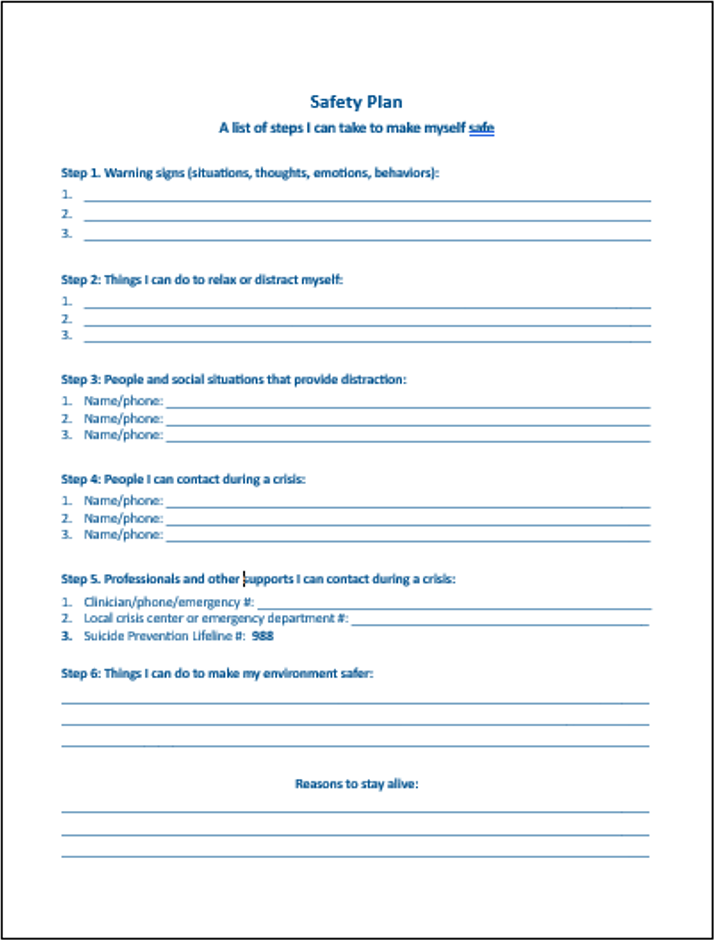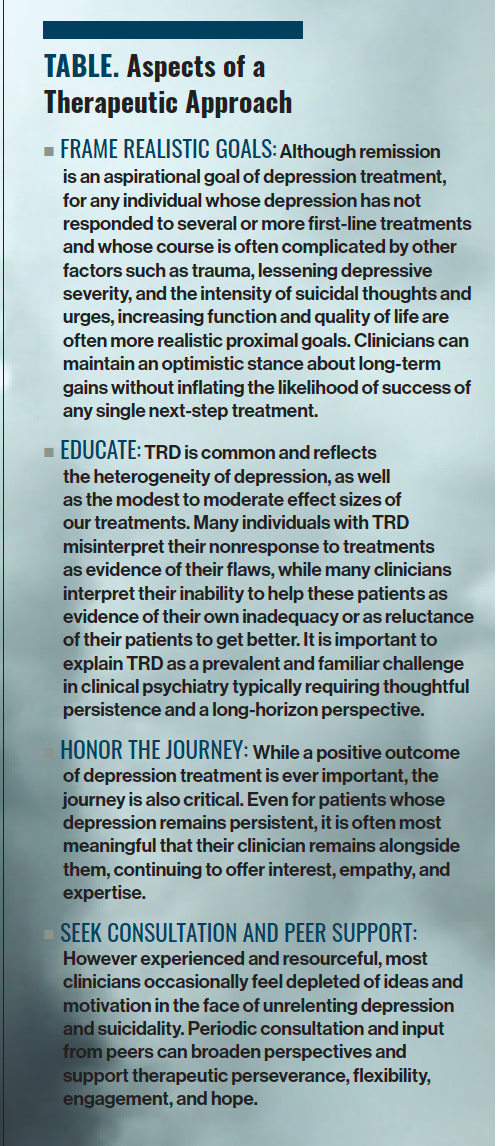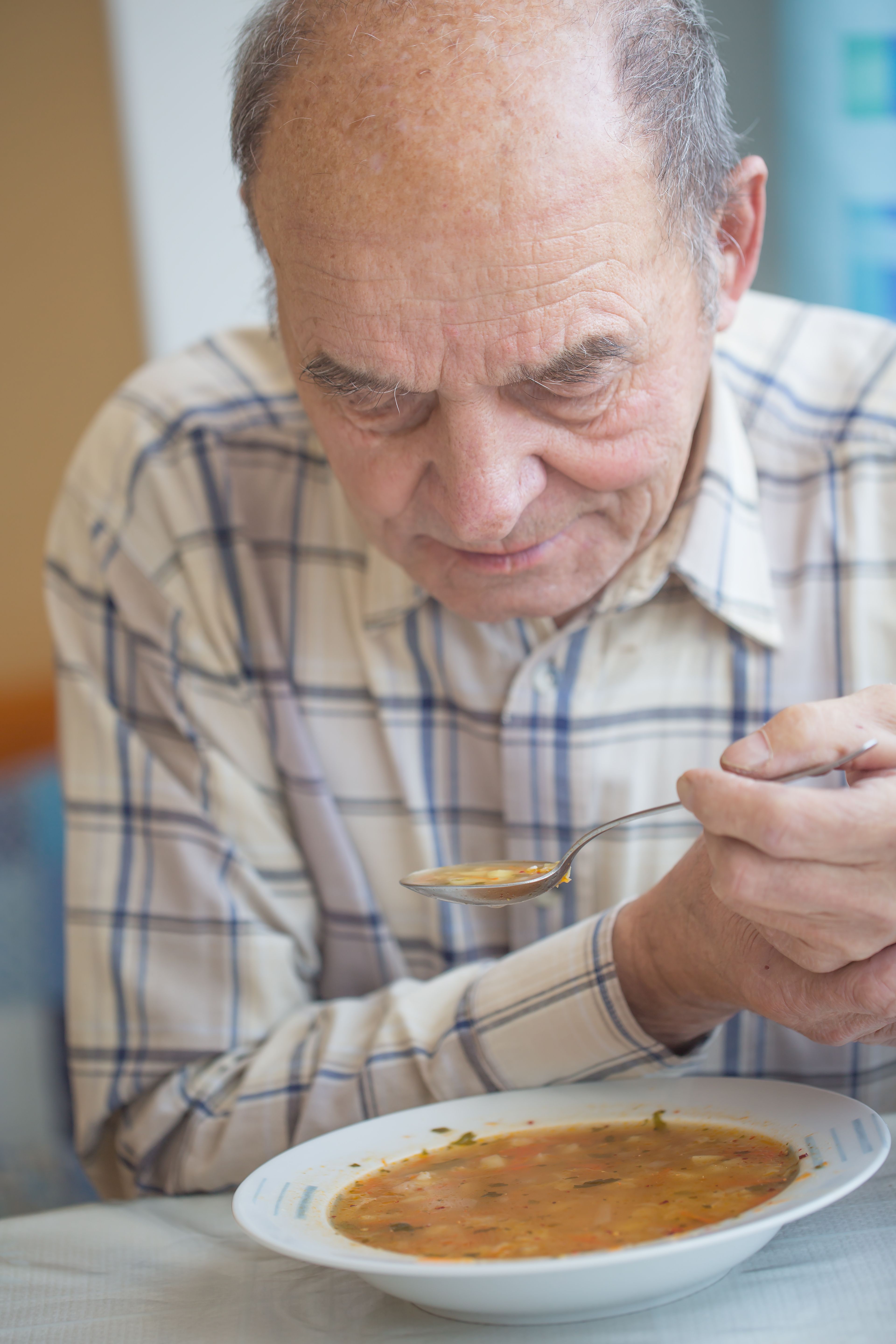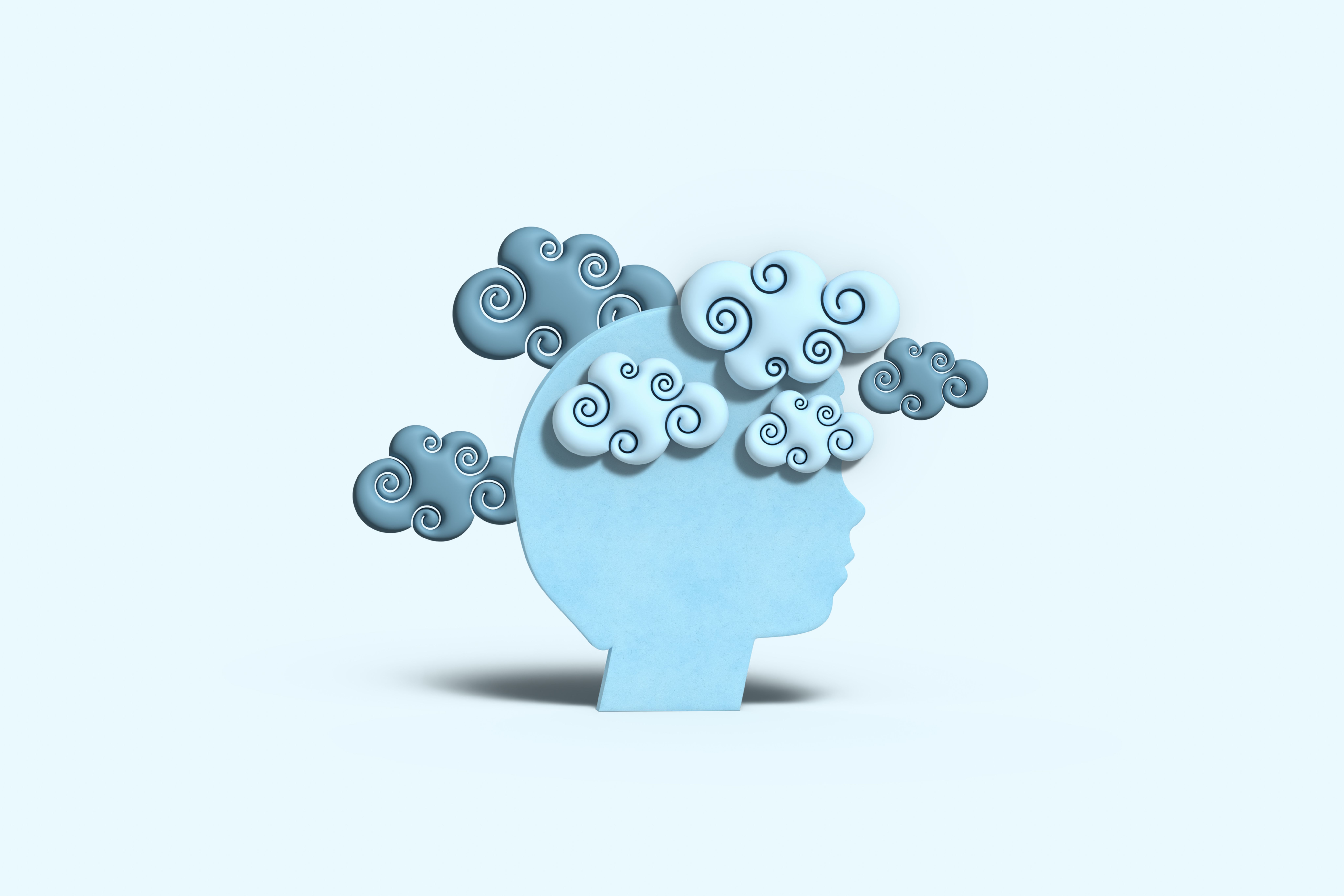Publication
Article
Psychiatric Times
Managing Suicidal Thoughts, Behaviors, and Risk in Treatment-Resistant Depression
A range of therapeutic targets are likely to be relevant for reducing risk of suicide in TRD. Here's what you need to know.
Tryfonov_AdobeStock

Suicidal thoughts and behaviors (STBs) are among the most dreaded complications of treatment-resistant depression (TRD), which is associated with elevated risk of death from suicide as well as from other conditions, even when compared with nonresistant depression.1
According to 1 meta-analysis, the overall incidence of suicide and suicide attempts among adults with TRD is between 2 and 10 times that of individuals with nonresistant depression.2 Approximately 30% of individuals with TRD attempt suicide at least once in their lifetime, compared with about 15% of those with nonresistant depression.3 Even when compared with individuals with unipolar depression, patients with a history of TRD should be considered at high risk for STBs.
Risk Factors
Although many years of suicide research has generated a large body of knowledge about risk factors, we still know relatively little about the causal associations among risk factors and STBs, and the mechanisms through which risk factors translate into thoughts, behaviors, and fatal outcomes. As in other areas of clinical medicine, prediction models of suicide that work reasonably well in the general population may not generalize to diverse subpopulations, creating a risk of exacerbating rather than addressing health disparities.4
While we know a lot about suicide risk factors, we know far less about how to predict imminent risk of suicide, which—given the tragic intractability of suicide death across the past century5—remains the holy grail of suicide research.
It remains unclear whether TRD is associated with any unique suicide risk profiles; still-growing knowledge indicates that risk factors for STBs among individuals with TRD closely resemble those for other individuals. For example, prior suicide attempts are the strongest risk factor for suicide death in TRD and in the general population.6
Moreover, factors often associated with TRD are also independent risk factors for STBs. These factors include early life adversity, personality disorders, anxiety, insomnia, chronic pain, substance use disorders, other co-occurring medical conditions, hopelessness, diminished problem-solving ability, low socioeconomic status, a paucity of social supports, and recent psychiatric hospitalization.7
While depression is associated with the presence of suicidal thoughts, other factors such as psychiatric comorbidity and impulsivity may be better predictors of STBs and suicide.8
In terms of psychological components of suicide risk, the influential Interpersonal Theory of Suicide proposed by Joiner et al focuses on 3 interconnected risk factors for suicidal thoughts: “thwarted belongingness,” “perceived burdensomeness,” and “hopelessness.”9 Although this theory is transdiagnostic, its relevance to the experience of many patients with TRD is clinically compelling.
The growing literature on suicide risk factors suggests that TRD may be associated with increased risk of STBs largely because of its close association with other risk factors for STBs; these factors are often connected with TRD as contributing factors to treatment resistance or as consequences.
The bad news is that managing depression itself may influence only part of the complex risk equation, potentially affecting suicidal thoughts more than acts. The good news is that there may be multiple levers that influence the transition from ideas to behavior. Many of these levers are directly relevant to the comprehensive, multimodal evaluation and care of patients with TRD.
Treatments
A range of pharmacological, psychological, and neurostimulation therapies have shown promise for reducing STBs including among individuals with TRD. In some studies, the antisuicide effects of treatment have appeared to be somewhat dissociable from the antidepressant effects, though this remains an area of continued inquiry. In addition, the impacts of treatments on suicidal ideation and attempts have been better studied than their impact on suicide deaths.
Finally, in many treatment studies relevant to TRD and STBs, STBs have been assessed primarily as secondary outcome measures in studies not adequately powered to test these outcomes; there remains much need for well-designed studies in TRD cohorts in which STBs are the primary outcomes of interest.
Clozapine: Based largely on the International Suicide Prevention Trial,10 clozapine was the first medication approved by the US Food and Drug Administration (FDA) to prevent suicidal behavior, specifically in individuals with schizophrenia or schizoaffective disorder.
Because of its substantial adverse effect burden and monitoring requirements, clozapine has not been widely used or studied as an antidepressant adjunct among TRD cohorts. Its superiority in reducing suicide risk compared with newer second-generation antipsychotics approved for antidepressant augmentation in TRD has not been established.
Ketamine and esketamine: Esketamine also carries a specific FDA indication for suicidality (since August 2020), particularly in the context of MDD, following its initial approval for TRD. Although data on the efficacy of intranasal esketamine or intravenous racemic ketamine for suicidality in TRD have been mixed,11 some studies have shown rapid reduction in suicidal ideation after single or repeated doses, sometimes independent of reduction in other core depressive symptoms.
A topic of further research is whether effects on ideation persist beyond the period of active treatment and whether they translate into fewer suicide attempts and deaths.
Lithium: The potential antisuicide effects of lithium have been reported for several decades. These effects have had some support from large pharmaco-epidemiological studies, particularly among individuals with bipolar disorder.12
A meta-analysis by Cipriani and colleagues13 demonstrated reduction in STBs among individuals with unipolar as well as bipolar illness; the authors hypothesized that lithium’s apparent antisuicide benefits may be related to prevention of relapse and/or reduced aggression and impulsivity. No adequate studies to date have compared lithium against other combinations or adjunctive antidepressant strategies in TRD with suicide as a primary outcome.
Buprenorphine: Recent years have seen a resurgence of interest in opioid mechanisms in depression treatment, particularly κ receptor antagonists, which appear to be associated with little or no abuse liability compared with mu agonists.
Although no opioid agents have been approved for major depressive disorder (MDD) or TRD, a small proof-of-concept, placebo-controlled trial of ultralow-dose buprenorphine (mean dose 0.44 mg), a partial μ agonist and κ antagonist, showed rapid onset reduction of suicidal ideation among individuals with depression when added to ongoing pharmacotherapy.14 This benefit persisted for the 4-week trial, suggesting potential promise in opioid mechanisms to reduce STBs in TRD.
Neurostimulation: Studies on most forms of neurostimulation treatments used in TRD have shown reductions in STBs. These include studies on electroconvulsive therapy,15-17 repetitive transcranial magnetic stimulation,18-20 and vagus nerve stimulation.21
Among investigational neurostimulation treatments, similar preliminary promising results for STBs have been reported with magnetic seizure therapy22 and transcranial direct current stimulation.23 Anecdotal reports suggested increased suicide risk among depressed individuals receiving deep brain stimulation24,25 though this has not been observed in other studies.26
Psychotherapies: A large body of data suggests that psychological therapies have a role in treating TRD and are often critical in the approach to TRD.27 Similarly, numerous studies suggest that first-line, evidence-based psychotherapies have a role in reducing risk of STBs.
These include cognitive behavior therapy28; dialectical behavior therapy29; interpersonal psychotherapy30; acceptance and commitment therapy31; and collaborative assessment and management of suicidality,32 a therapeutic framework specifically designed for patients with suicidality.
Brief and ultrabrief therapy interventions have also been found to be effective.33 Though promising, most studies have focused on suicidal ideation rather than suicide attempts or deaths, and no controlled trials to our knowledge have focused on STBs specifically in TRD populations.
Managing Risk
Core components in the management of suicide risk among patients with TRD include regular assessment, safety planning, and supporting a hopeful and realistic therapeutic stance.
Assessment of suicide risk: Comprehensive assessment of suicide risk includes appreciation of longer-term demographic and clinical risk factors, identification of current and past suicidal thoughts, and evaluation of potentially impulsive emotional and behavioral responses to stressful circumstances.
Psychiatric practice over the next decade will likely increasingly integrate a range of novel risk assessment and mitigation approaches, including machine learning techniques that scour electronic health records, behavioral tasks to evaluate implicit cognitions, and the use of ecological momentary assessment from digital devices coupled with patient prompts to support coping and help-seeking behaviors and messaging to clinical teams in the context of imminent risk.
Many health systems have adopted standardized suicide risk screens, such as the Columbia-Suicide Severity Rating Scale (Figure 1), which includes questions clinicians use in routine assessments for patients with TRD.
Figure 1. Columbia-Suicide Severity Rating Scale

Using a standardized scale, routine assessment, and documentation of suicide risk among patients at elevated risk is integral to good clinical practice.
Safety planning: For the many patients with TRD who are at high risk for suicide, clinicians and patients should collaboratively agree upon a safety plan34 that typically includes (1) identifying warning signs for suicidal behavior; (2) using coping activities, including relaxation and distraction; (3) reminding of individuals and social situations that can provide distraction; (4) listing contact information for personal supports in a crisis; (5) recording phone numbers for professional and emergency resources and the 988 suicide prevention lifelines; and (6) describing steps to make the environment safer (eg, reducing access to firearms or stockpiled medications).
We also include a section for reasons to live (Figure 2).35
Figure 2. Suicide Safety Plan Template35

The safety plan should be maintained by the patient and clinician and updated regularly, particularly at key transitions such as hospital discharge.
Therapeutic stance: Recurrently dashed hopes, growing pessimism, self-blame, persistent suffering, and social isolation are often core experiences of individuals with TRD. Joiner’s triad of thwarted belongingness, perceived burdensomeness, and hopelessness are evocative of this experience and the enhanced risk of suicide they entail. Clinicians working with patients with TRD and suicidality are not immune to absorbing the nihilism of the individuals they work with. Aspects of a positive therapeutic approach can be found in the Table.
Table. Aspects of a Therapeutic Approach

Concluding Thoughts
TRD is associated with elevated risk for STBs and suicide death even when compared with depression without documented resistance. Risk factors for suicide in TRD appear to be largely similar to those in the general population and are often themselves risk factors for and/or consequences of TRD.
A range of therapeutic targets are likely to be relevant for reducing risk of suicide in TRD. Several pharmacotherapies have shown potential antisuicide benefits, including clozapine, ketamine/esketamine, lithium, and buprenorphine. However, research in this area is still evolving with few studies involving active comparators or long-term follow-up and not all focused on TRD.
Most forms of neurostimulation have been associated with reduction in suicidal ideation though this remains a nascent area of research. Several psychotherapies show substantial promise for reducing STBs, though most have focused on suicidal thoughts rather than suicide and none have been adequately studied in TRD.
An optimal therapeutic approach to suicide in TRD involves screening and ongoing assessment, suicide planning, a hopeful but realistic therapeutic stance that emphasizes attainable goals and consistency in the treatment relationship, and recruitment of consultation and peer supports to address therapeutic blind spots and burnout. While TRD is associated with elevated risk of suicide, most individuals with TRD do not attempt suicide and many achieve reduction in suffering and a meaningful quality of life.
Dr Franz is an assistant professor of psychology at the Ferkauf Graduate School of Psychology, Yeshiva University. He is also an assistant professor in the Department of Psychiatry and Behavioral Sciences at Albert Einstein College of Medicine in Bronx, New York. Dr Alpert is chair of the Department of Psychiatry and Behavioral Sciences and professor of psychiatry and behavioral sciences, neuroscience, and pediatrics at the Montefiore Medical Center and Albert Einstein College of Medicine in Bronx, New York.
References
1. Brenner P, Reutfors J, Nijs M, Andersson TM. Excess deaths in treatment-resistant depression. Ther Adv Psychopharmacol. 2021;11:20451253211006508.
2. Bergfeld IO, Mantione M, Figee M, et al. Treatment-resistant depression and suicidality. J Affect Disord. 2018;235:362-367.
3. Kern DM, Canuso CM, Daly E, et al. Suicide-specific mortality among patients with treatment-resistant major depressive disorder, major depressive disorder with prior suicidal ideation or suicide attempts, or major depressive disorder alone. Brain Behav. 2023;13(8):e3171.
4. Coley RY, Johnson E, Simon GE, et al. Racial/ethnic disparities in the performance of prediction models for death by suicide after mental health visits. JAMA Psychiatry. 2021;78(7):726-734.
5. Suicide. Centers for Disease Control and Prevention National Center for Health Statistics. Reviewed June 26, 2023. Accessed October 19, 2023. https://www.cdc.gov/nchs/hus/topics/suicide.htm#featured-charts
6. Reutfors J, Andersson TM, Tanskanen A, et al. Risk factors for suicide and suicide attempts among patients with treatment-resistant depression: nested case-control study. Arch Suicide Res. 2021;25(3):424-438.
7. Turecki G, Brent DA, Gunnell D, et al. Suicide and suicide risk. Nat Rev Dis Primers. 2019;5(1):74.
8. Franklin JC, Ribeiro JD, Fox KR, et al. Risk factors for suicidal thoughts and behaviors: a meta-analysis of 50 years of research. Psychol Bull. 2017;143(2):187-232.
9. Van Orden KA, Witte TK, Cukrowicz KC, et al. The interpersonal theory of suicide. Psychol Rev. 2010;117(2):575-600.
10. Meltzer HY, Alphs L, Green AI, et al. Clozapine treatment for suicidality in schizophrenia: International Suicide Prevention Trial (InterSePT). Arch Gen Psychiatry. 2003;60(1):82-91.
11. McIntyre RS, Rosenblat JD, Nemeroff CB, et al. Synthesizing the evidence for ketamine and esketamine in treatment-resistant depression: an international expert opinion on the available evidence and implementation. Am J Psychiatry. 2021;178(5):383-399.
12. Hayes JF, Pitman A, Marston L, et al. Self-harm, unintentional injury, and suicide in bipolar disorder during maintenance mood stabilizer treatment: a UK population-based electronic health records study. JAMA Psychiatry. 2016;73(6):630-637.
13. Cipriani A, Hawton K, Stockton S, Geddes JR. Lithium in the prevention of suicide in mood disorders: updated systematic review and meta-analysis. BMJ. 2013;346:f3646.
14. Yovell Y, Bar G, Mashiah M, et al. Ultra-low-dose buprenorphine as a time-limited treatment for severe suicidal ideation: a randomized controlled trial. Am J Psychiatry. 2016;173(5):491-498.
15. Ahmadi N, Moss L, Simon E, et al. Efficacy and long-term clinical outcome of comorbid posttraumatic stress disorder and major depressive disorder after electroconvulsive therapy. Depress Anxiety. 2016;33(7):640-647.
16. Kellner CH, Fink M, Knapp R, et al. Relief of expressed suicidal intent by ECT: a consortium for research in ECT study. Am J Psychiatry. 2005;162(5):977-982.
17. Liang CS, Chung CH, Ho PS, et al. Superior anti-suicidal effects of electroconvulsive therapy in unipolar disorder and bipolar depression. Bipolar Disord. 2018;20(6):539-546.
18. Abdelnaim MA, Langguth B, Deppe M, et al. Anti-suicidal efficacy of repetitive transcranial magnetic stimulation in depressive patients: a retrospective analysis of a large sample. Front Psychiatry. 2020;10:929.
19. Weissman CR, Blumberger DM, Brown PE, et al. Bilateral repetitive transcranial magnetic stimulation decreases suicidal ideation in depression. J Clin Psychiatry. 2018;79(3):17m11692.
20. George MS, Raman R, Benedek DM, et al. A two-site pilot randomized 3 day trial of high dose left prefrontal repetitive transcranial magnetic stimulation (rTMS) for suicidal inpatients. Brain Stimul. 2014;7(3):421-431.
21. Aaronson ST, Sears P, Ruvuna F, et al. A 5-year observational study of patients with treatment resistant depression treated with vagus nerve stimulation or treatment as usual: comparison of response, remission, and suicidality. Am J Psychiatry. 2017;174(7):640-648.
22. Weissman CR, Blumberger DM, Dimitrova J, et al. Magnetic seizure therapy for suicidality in treatment-resistant depression. JAMA Netw Open. 2020;3(8):e207434.
23. Brunoni AR, Junior RF, Kemp AH, et al. Differential improvement in depressive symptoms for tDCS alone and combined with pharmacotherapy: an exploratory analysis from the sertraline vs. electrical current therapy for treating depression clinical study. Int J Neuropsychopharmacol. 2014;17(1):53-61.
24. Foncke EMJ, Schuurman PR, Speelman JD. Suicide after deep brain stimulation of the internal globus pallidus for dystonia. Neurology. 2006;66(1):142-143.
25. Mahgoub NA, Kotbi N. Acute depression and suicidal attempt following lowering the frequency of deep brain stimulation. J Neuropsychiatry Clin Neurosci. 2009;21(4):468.
26. Bergfeld IO, Mantione M, Hoogendoorn ML, et al. Deep brain stimulation of the ventral anterior limb of the internal capsule for treatment-resistant depression: a randomized clinical trial. JAMA Psychiatry. 2016;73(5):456-464.
27. Ijaz S, Davies P, Williams CJ, et al. Psychological therapies for treatment-resistant depression in adults. Cochrane Database Syst Rev. 2018;5(5):CD010558.
28. Gøtzsche P C, Gøtzsche PK. Cognitive behavioural therapy halves the risk of repeated suicide attempts: systematic review. J R Soc Med. 2017;110(10):404-410.
29. Linehan MM, Comtois KA, Murray AM, et al. Two-year randomized controlled trial and follow-up of dialectical behavior therapy vs therapy by experts for suicidal behaviors and borderline personality disorder. Arch Gen Psychiatry. 2006;63(7):757-766.
30. Heisel MJ, Talbot NL, King DA, et al. Adapting interpersonal psychotherapy for older adults at risk for suicide. Am J Geriatr Psychiatry. 2015;23(1):87-98.
31. Tighe J, Nicholas J, Shand F, Christensen H. Efficacy of acceptance and commitment therapy in reducing suicidal ideation and deliberate self-harm: systematic review. JMIR Ment Health. 2018;5(2):e10732.
32. Swift JK, Trusty WT, Penix EA. The effectiveness of the collaborative assessment and management of suicidality (CAMS) compared to alternative treatment conditions: a meta-analysis. Suicide Life Threat Behav. 2021;51(5):882-896.
33. Stanley B, Brodsky B, Monahan M. Brief and ultra-brief suicide-specific interventions. Focus (Am Psychiatr Publ). 2023;21(2):129-136.
34. Stanley B, Brown GK, Brenner LA, et al. Comparison of the safety planning intervention with follow-up vs usual care of suicidal patients treated in the emergency department. JAMA Psychiatry. 2018;75(9):894-900.
35. Stanley-Brown Safety Planning Intervention. Accessed November 6, 2023. https://suicidesafetyplan.com

Newsletter
Receive trusted psychiatric news, expert analysis, and clinical insights — subscribe today to support your practice and your patients.






